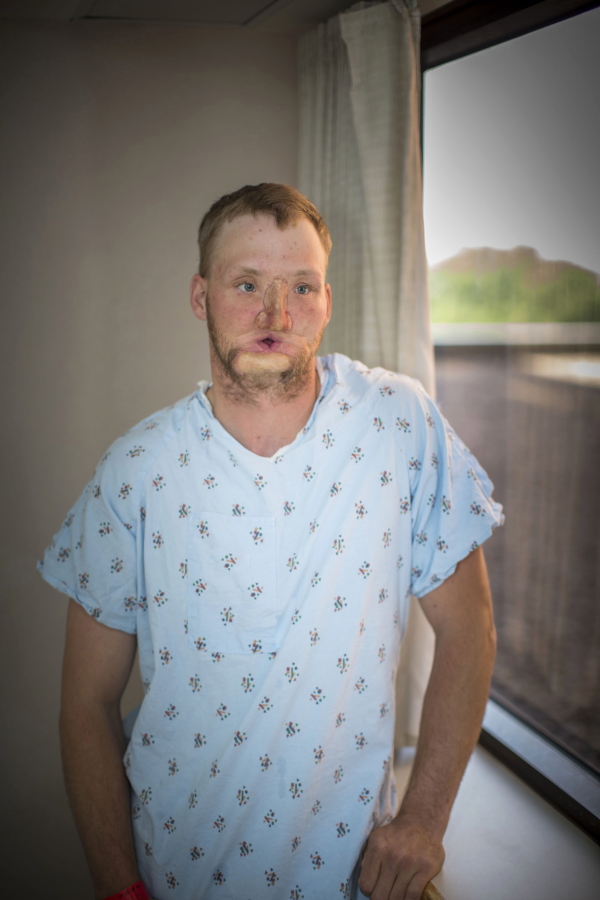ROCHESTER, Minn. — He’d been waiting for this day, and when his doctor handed him the mirror, Andy Sandness stared at his image and absorbed the enormity of the moment: He had a new face, one that had belonged to another man.
His father and his brother, joined by doctors and nurses at the Mayo Clinic, watched him examine his swollen features. He was just starting to heal from one of the rarest surgeries in the world — a face transplant, the first at the medical center. He had the nose, cheeks, mouth, lips, jaw, chin, even the teeth of his donor. Resting in his hospital bed, he still couldn’t speak clearly.
“Far exceeded my expectations,” he scrawled in a notebook.
“You don’t know how happy that makes us feel,” Dr. Samir Mardin replied.
The exchange came near the end of an extraordinary medical journey that revolved around two outdoorsmen, both unknown to each other and just 21 when they decided to kill themselves: Sandness survived but with a face almost destroyed by a gunshot; the other man died.
Their paths wouldn’t converge for years, but when they did — in side-by-side operating rooms — one man’s tragedy offered hope the other would have a second chance at a normal life.



